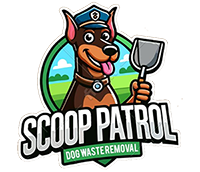5 Critical Pet First Aid Skills Every Owner Should Know

Being prepared for pet emergencies can save your furry friend’s life. While not a substitute for veterinary care, knowing basic first aid allows you to stabilize your pet until professional help arrives. Here are 5 essential skills every owner should learn.
1. Creating a Pet First Aid Kit:
Assemble a readily accessible kit with: bandages, non-adhesive gauze, adhesive tape, antiseptic wipes, blunt-nosed scissors, tweezers, a digital rectal thermometer with lubricant, disposable gloves, and hydrogen peroxide (3% solution – use only with veterinary guidance). Consider adding a blanket, makeshift muzzle materials, a pet carrier, and a first aid guide. Keep it in a known location and have a travel version. Regularly check and replenish supplies.
2. Checking Vital Signs:
Know your pet’s normal ranges:
- Temperature: Dogs 100-102.5°F, Cats 100.4-102.5°F
- Pulse: Dogs 60-140 bpm, Cats 140-220 bpm
- Respiration: Dogs 10-30 breaths/min, Cats 20-30 breaths/min
Learn how to take rectal temperature, feel the pulse on the inner thigh or chest, and count breaths by observing chest movement. Knowing these baselines helps identify abnormalities.
3. Controlling Bleeding:
For minor bleeding, apply direct pressure with a clean cloth or gauze for several minutes without lifting. For severe limb bleeding uncontrolled by pressure, use a tourniquet as a last resort above the wound, noting the time applied, and seek immediate vet care.
4. Wound Care:
Clean minor wounds gently with lukewarm water or vet-recommended antiseptic (avoid harsh chemicals). Remove debris. Cover with a clean, non-stick bandage applied snugly but not too tight. Change bandages regularly and monitor for infection. For deep or heavily contaminated wounds, consult a vet.
5. Pet Choking (Heimlich Maneuver):
Recognize choking signs: gagging, difficulty breathing, pawing at the mouth, blue gums, loss of consciousness.
- Conscious Dog: Stand behind, place fists below ribs, thrust upwards and forwards.
- Unconscious Dog: Lay on side, compress abdomen upwards and forwards. Check and clear mouth.
- Cats/Small Dogs: Hold upside down, give sharp back pats. Sweep mouth for obstructions.
Additional Essential Tips: Stay calm. Muzzle injured dogs (if safe). Transport injured pets carefully in a carrier or makeshift stretcher, supporting suspected spinal injuries. Prevent accidents by securing hazards and supervising pets.
Learning these 5 critical pet first aid skills empowers you to provide crucial initial care. However, always seek immediate professional veterinary attention for any serious injury or illness. Consider a pet first aid course for comprehensive training. Being prepared can make all the difference.

